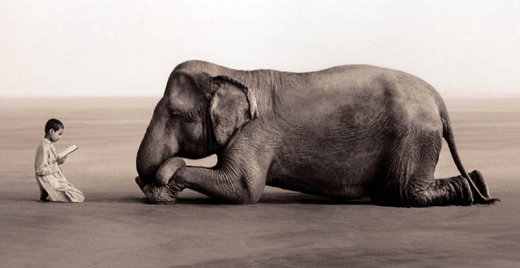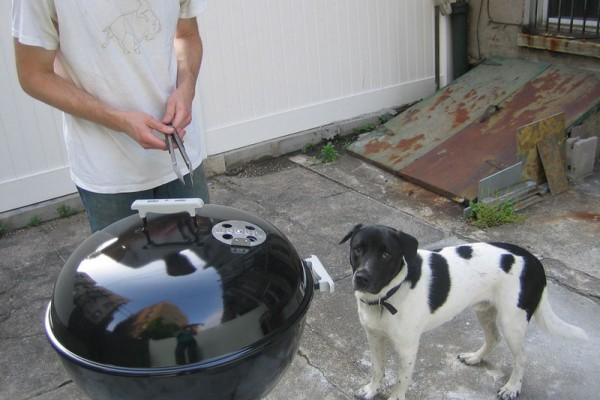Americans love their pets. We feed them better than most humans in third world countries are fed. We dote on them with toys at Christmas, and we award them the honorary status of “children.” But do we acknowledge that all creatures are, like us, spirit souls? Do we honor them as living entities working their way slowly toward perfection, or do we just cater to their bodies — treating them like they are toys for our amusement?
The spiritual literatures studied by bhakti yogis teach that every living entity is, at its fundamental core, a spirit soul (called the atma). Every living being is a soul — individual and equal — wearing an individual body. In other words, the soul that is presently in your puppy, Fredo, is an individual living entity spending that lifetime inside the body of a dog. But look deep into Fredo’s eyes and you might sense the atma looking back at you.
Try this. Think of bodies as light bulbs. Some are 15-watt, some 30-watt, some 1,000-watt. The electric current that runs through the walls, into the lamp and to the bulb is the same. What is different is each bulb’s capacity to utilize the current. A 15-watt bulb can only funnel so much current into usable light. A 1,000-watt bulb can channel much more.
So, in the same way, different bodies are capable of expressing different amounts of consciousness. A dung beetle is concerned only with rolling or burrowing deeper into the cow patty. A dog can express happiness, anger and love. A human birth allows the greatest expression of consciousness. But even within the human birth, there are gradations of consciousness.
On the one hand, we treat our pets like they are little humans. But if asked “Is an animal a spirit soul?” most Westerners raised in a Judeo-Christian paradigm will say “No, only humans have souls.” Yet the symptom of the soul is consciousness. Even slight consciousness attests to the presence of the soul (atma) in the body. If Fredo stops breathing, you may say your dog “died.” I use quotes because in the Bhagavad-gita we learn,
“That which pervades the entire body you should know to be indestructible. No one is able to destroy the imperishable soul.” —BG 2.17
THE BODY IS A VEHICLE FOR THE SOUL
You might say, “Fredo’s gone!” Nevertheless, the body looks the same, as if Fredo were sleeping. But what exactly is gone? The answer: the atma (soul). And as a result, there is no more consciousness illuminating the body (like the electricity in the bulb). The atma has left Fredo’s body and is on its way to a new body.
“As the embodied soul continuously passes, in this body, from childhood to youth to old age, the soul similarly passes into another body at death. A sober person is not bewildered by such a change.” —BG 2.13
“Bodies are material productions of different modes of material nature, but the soul and Supersoul within the body are of the same spiritual quality.”—Purport to BG 2.18, by Srila A.C. Bhaktivedanta Swami
The next time you are on the Internet, visit YouTube and pull up the video entitled “Tara & Bella – the Odd Couple.” When you watch this video about Tara and Bella, remember that at one time in this country (not so very long ago), women and African Americans were considered property with no rights and were often treated inhumanely. Today, animals and other conscious beings, because they are not humans, suffer horrific cruelties (even with pets we often decide what’s “good” for them based on what’s convenient for us). We thoughtlessly squash a spider or ant. Some hunt animals to kill for “sport.” Yet Tara and Bella show us that we should reconsider our “dominion” over other species. Does dominion over atmas who are perhaps akin to a lower wattage bulb (in the example above) mean we have the right to kill them at will? Or does dominion mean to care for and protect all living beings? We should develop equal vision and see all living beings as spirit souls, fundamentally and qualitatively equal, though presently expressing their consciousness through a vast variety of bodies, large and small, with simple or complex consciousness.
Tara and Bella understand that their vastly different bodies should not be an impediment to friendship. Perhaps we could learn something from them.





